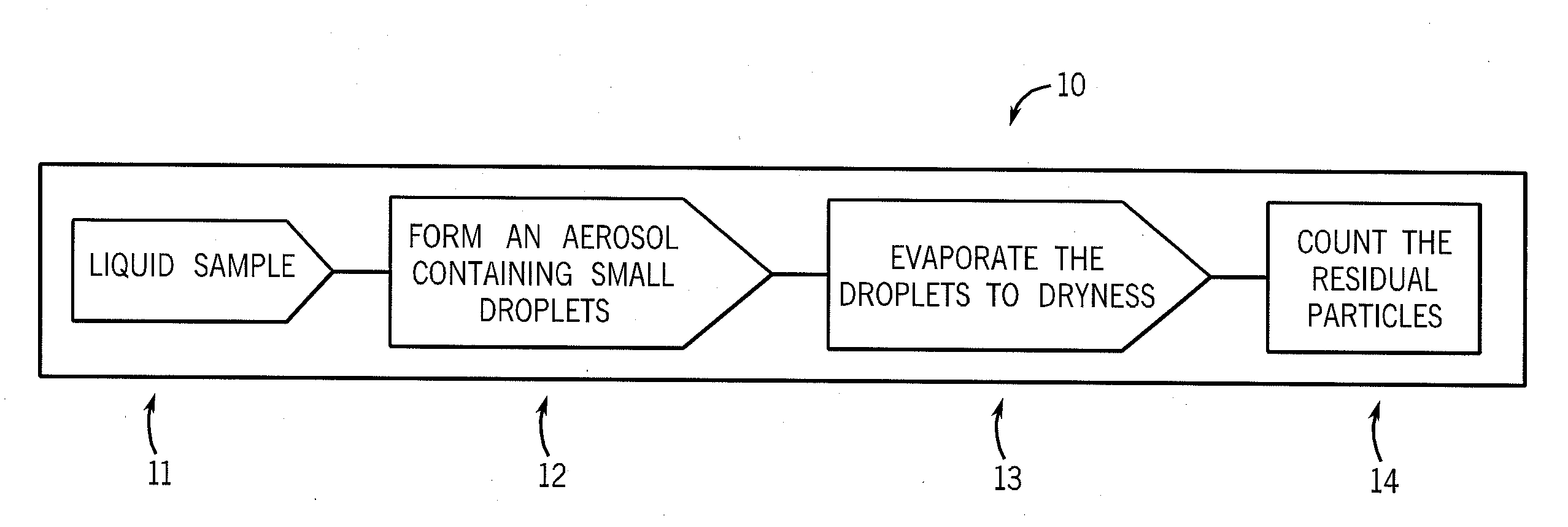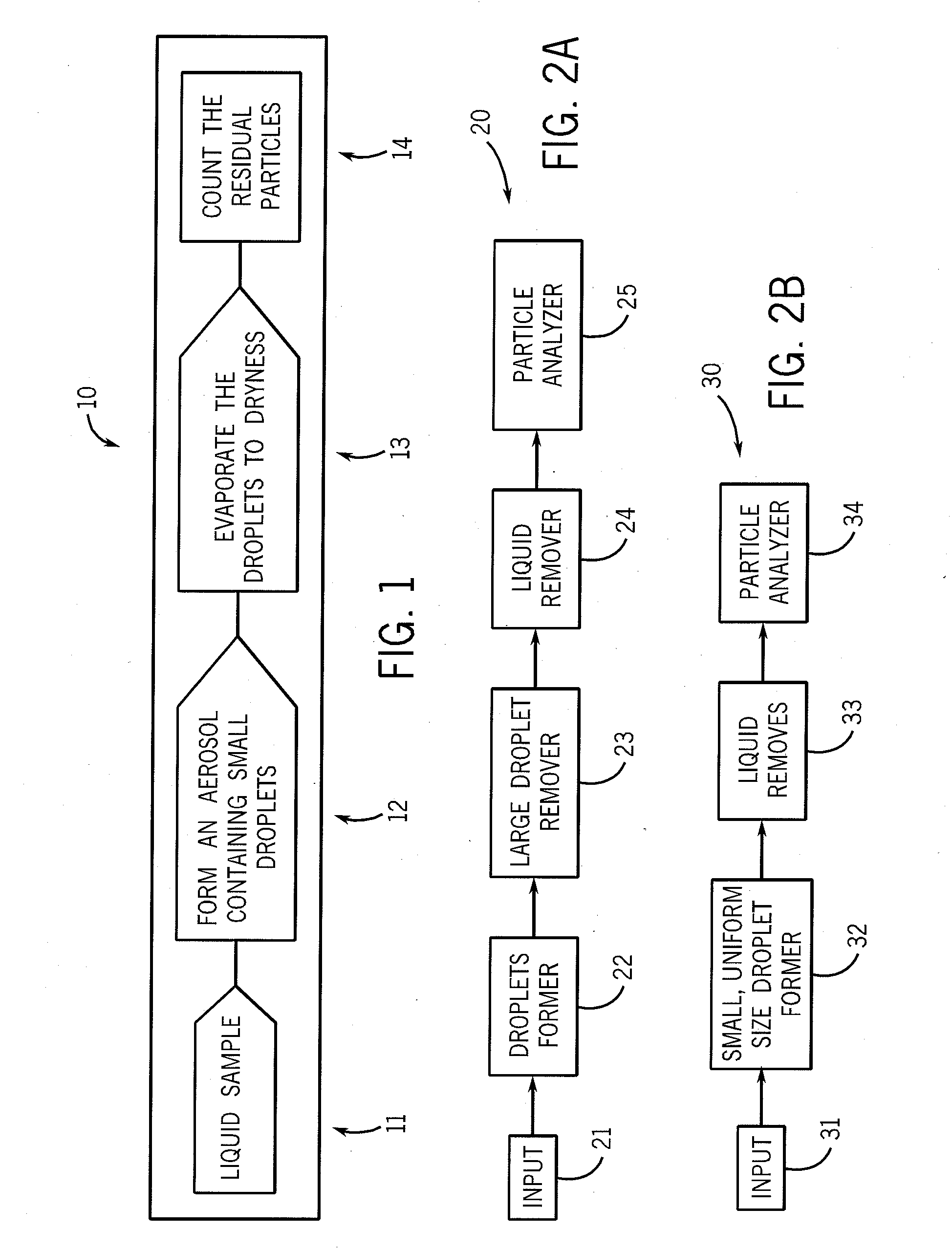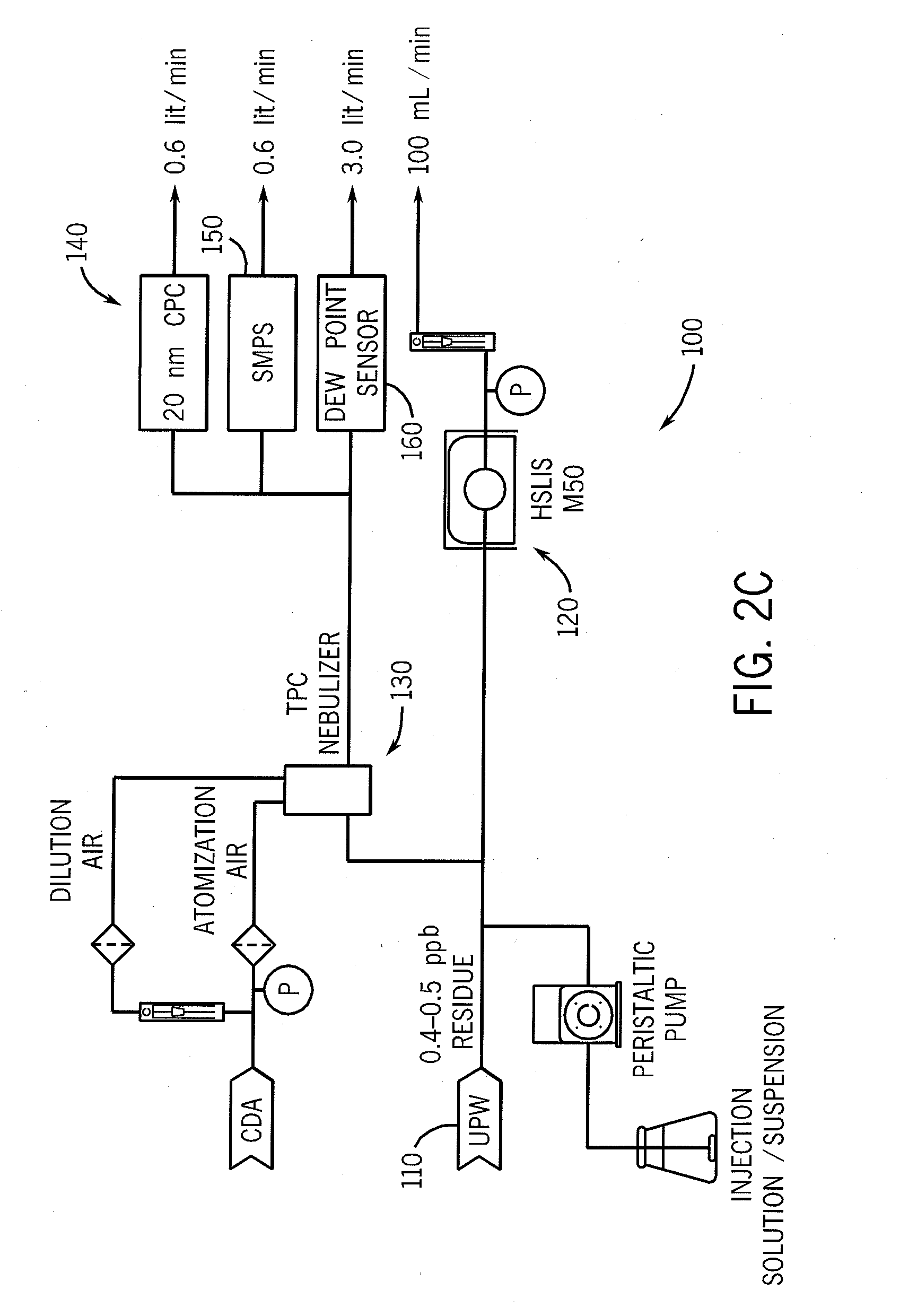Particle concentration measurement technology
a technology of concentration measurement and particle, applied in the field of particle concentration measurement technology, can solve the problems of small particles, particle sizes less than 50 nm can significantly reduce the manufacturing yield of present-day semiconductor devices, and the manufacturing industry of semiconductor devices, so as to achieve higher kinetic energy mixing, reduce the effect of particle size and particle siz
- Summary
- Abstract
- Description
- Claims
- Application Information
AI Technical Summary
Benefits of technology
Problems solved by technology
Method used
Image
Examples
Embodiment Construction
[0052]The present invention provides a method and apparatus for determining the size distribution and concentration of particles in a liquid.
[0053]A. Methods of the Invention.
[0054]The method involves (a) forming droplets, for example via aerosolization, from a liquid sample to be analyzed, (b) isolating small droplets from the droplets, for example less than 10 um in size, (c) drying the droplets to remove the liquid, for example via evaporation, and (d) counting the residual particles.
[0055]Importantly, the aerosol droplets isolated are small and uniformly sized, less than 10 um and preferably a median size less than 1 um. The droplets must be small and uniformly sized because any dissolved material in the droplet will form a “residue” particle as a result of drying. If the residue particle is large enough it will be detected by the analyzer and interfere with the measurement of true, non-dissolved, particles.
[0056]The size of a residue particle resulting from evaporation of a liq...
PUM
 Login to View More
Login to View More Abstract
Description
Claims
Application Information
 Login to View More
Login to View More - R&D
- Intellectual Property
- Life Sciences
- Materials
- Tech Scout
- Unparalleled Data Quality
- Higher Quality Content
- 60% Fewer Hallucinations
Browse by: Latest US Patents, China's latest patents, Technical Efficacy Thesaurus, Application Domain, Technology Topic, Popular Technical Reports.
© 2025 PatSnap. All rights reserved.Legal|Privacy policy|Modern Slavery Act Transparency Statement|Sitemap|About US| Contact US: help@patsnap.com



